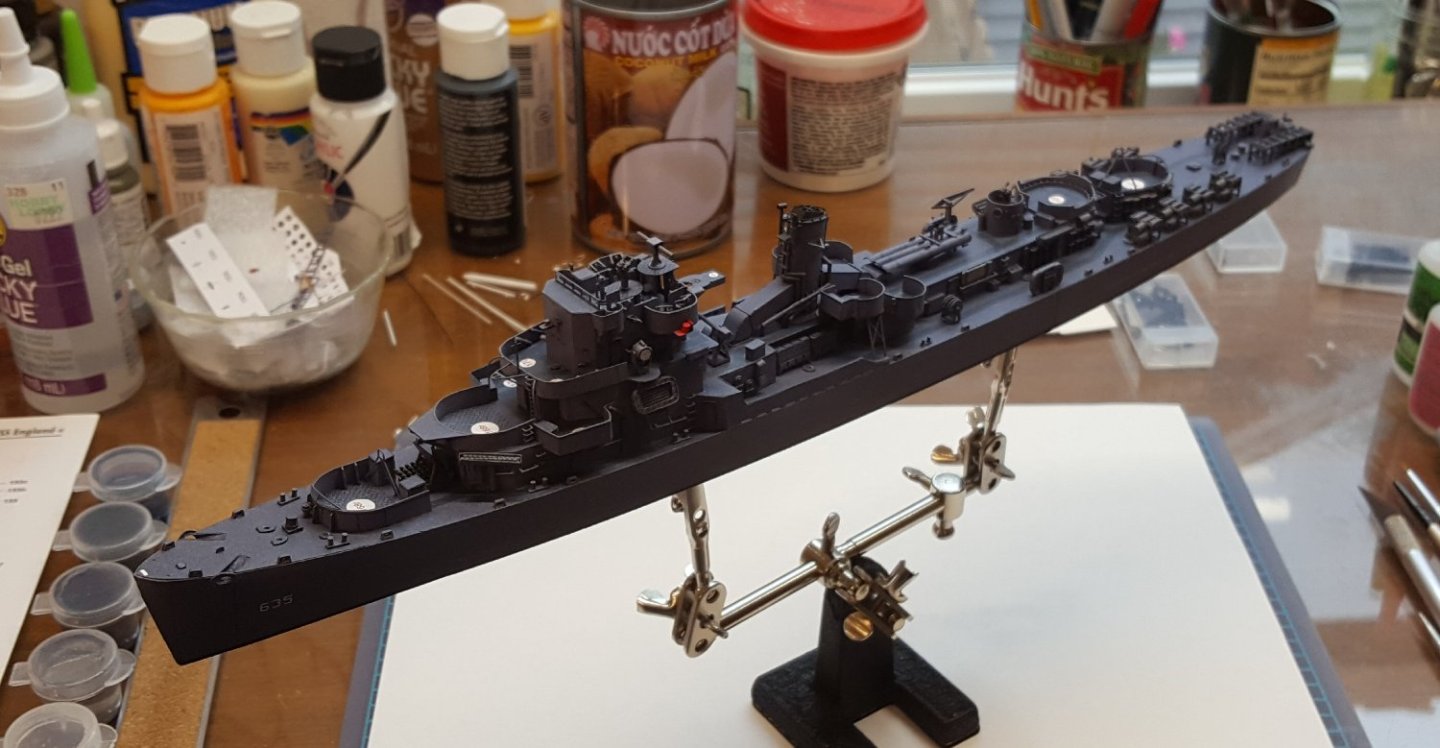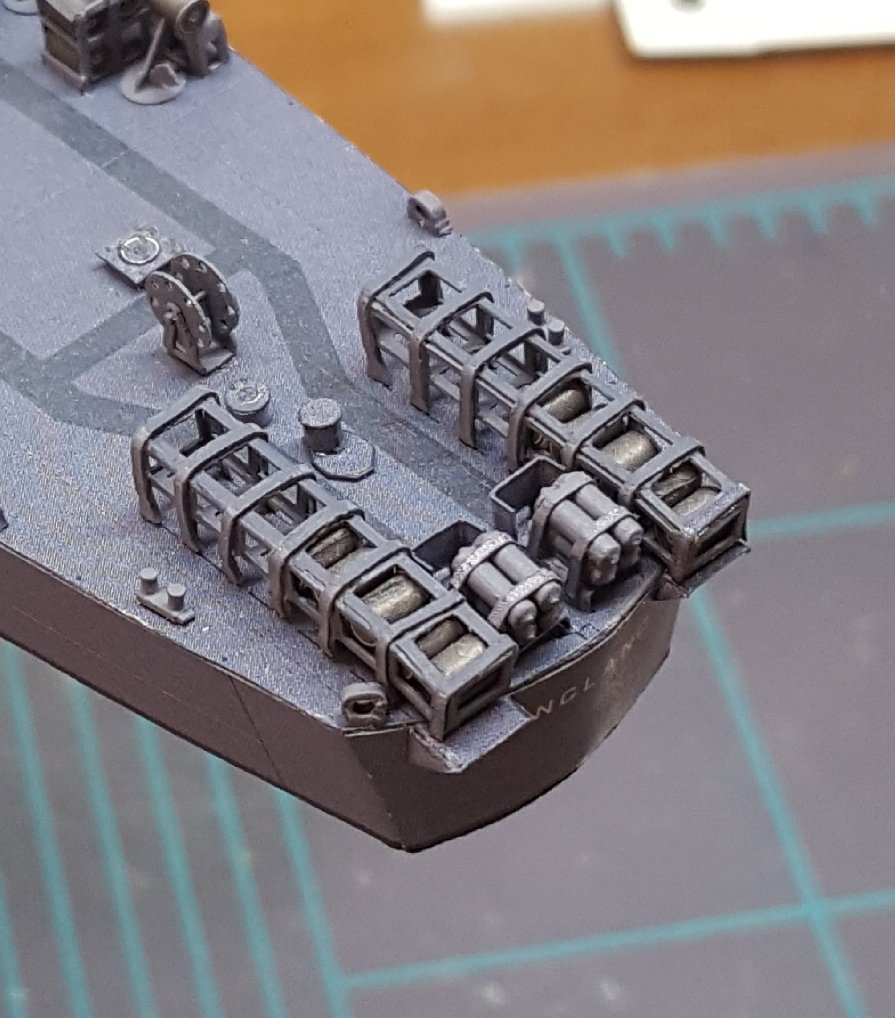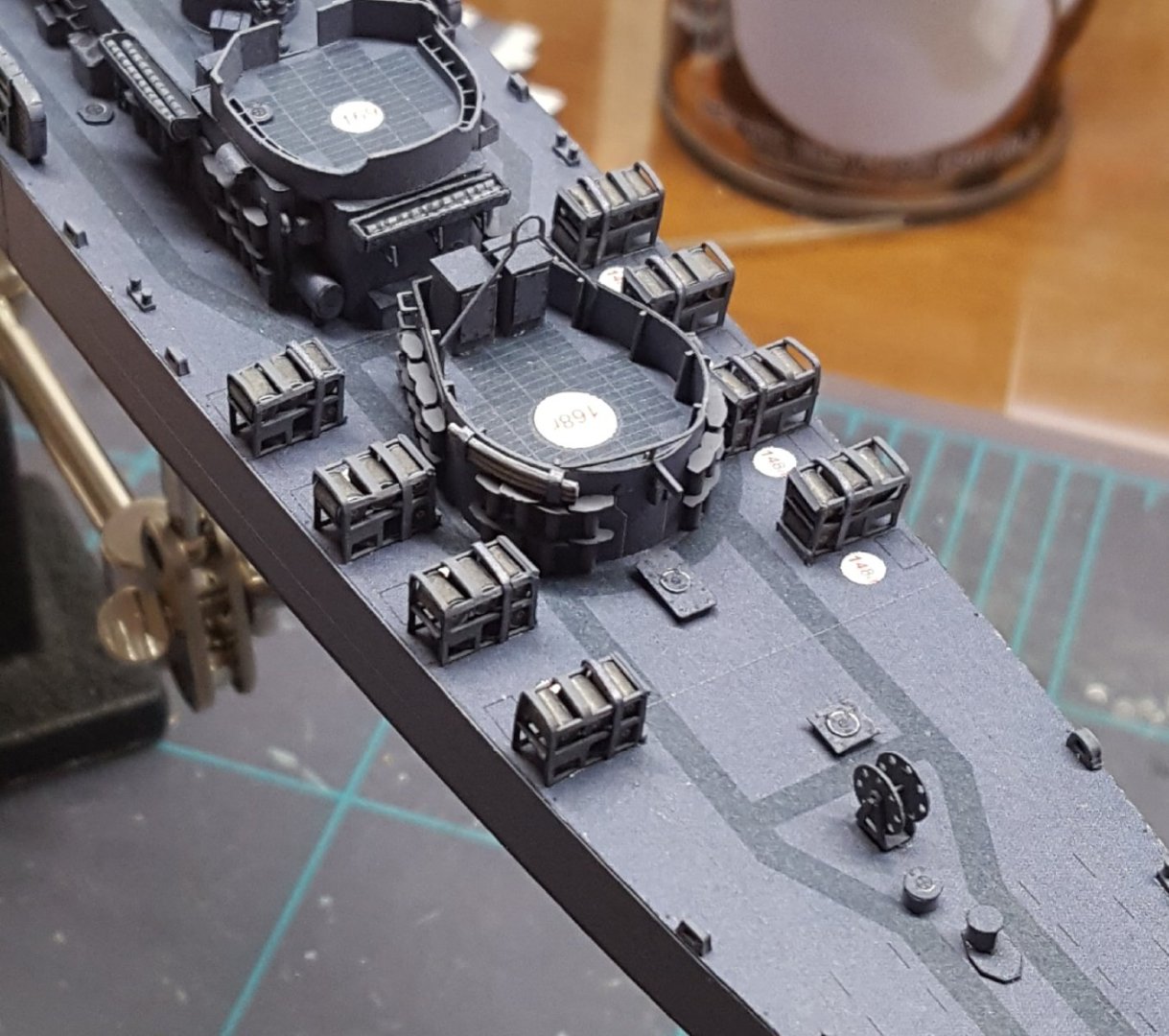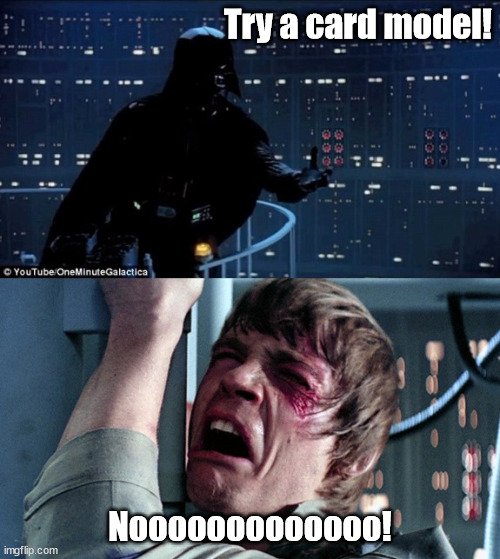-
Posts
10,350 -
Joined
-
Last visited
Content Type
Profiles
Forums
Gallery
Events
Everything posted by ccoyle
-
Your images tipped me off to the fact that I glued the air search radar antenna on backwards. 😥
-
Step 24 is now completed. The jackstaff at the stern was the last addition. I had some problems with it. Problem #1 is that my cheap tweezers ka-pinged my first attempt into another dimension. Problem #2 was noticed when looking at some images online trying to figure out the placement of the stern navigation light -- turns out that I built the lower part of the staff structure wrong, resulting in a staff that is too short. But by that time, everything was rock-solidly secured with CA, so now it is what it is. Sometimes this model feels like "death by a thousand imperfections." I have now moved on to the mast, which with its numerous components is scary as all get-out. Not the least of the questions to be resolved will be the rigging, since there is no sort of step-by-step or color-coded sequence given for the spider's web of lines. Here is a shot of England in her present state:
-
Stern racks completed. These were a real booger - I'll be happy to never build racks from card again 😬 I had two options: 1. Build them from the printed parts, which requires cutting out the spaces between frames, unless one wants to build simplified racks. 2. Use the laser-cut racks in the detail set. I tried both methods, and neither proved ideal. Both types of parts proved difficult to fold and did not hold a crease well. Ultimately I ended up using the laser-cut racks, but had to cut them into individual pieces (i.e. tops, sides, etc.) and then glue them together again -- very tedious. The "legs" on the racks consist of seven individual parts that must be added to each finished rack; the legs wrap around the racks and are nearly impossible to align correctly (some 'surgery' was necessary). So -- frustrating, but done. The cylinders are printed resin parts. PS: please don't notice that the port-side rack is placed slightly too far forward.
-

Bristol F.2B WW1 Fighter by CDW - FINISHED - Eduard - 1:48 Scale
ccoyle replied to CDW's topic in Non-ship/categorised builds
It's a weird lay, to be sure, but one can't argue with success, and the F.2b was very successful. -
Welcome aboard!
-
Very nice! Since this is really a build log, albeit in video format, I have moved it to the proper area. Cheers!
- 7 replies
-
- Winston Churchill
- Billing Boats
-
(and 1 more)
Tagged with:
-

F4U-1A Corsair by DocRob - FINISHED - Tamiya - 1/32
ccoyle replied to DocRob's topic in Non-ship/categorised builds
Which looks great so far! -
Welcome! I'm still trying to figure out whether "martimous" is an unfamiliar adjective or a derivation of "Marty Mouse." 🤔
-
Finally got around to finishing the rest of the K-gun racks. Whew, what a slog! And as long as one doesn't look too closely, you can't tell how kind of misshapen they are -- laser-cut card details don't fold very neatly. 😬
-
Welcome aboard, Bruce!
-

On Hold - Nakajima Type KO 3 by CDW - Answer - 1:33 Scale - CARD
ccoyle replied to CDW's topic in Non-ship/categorised builds
I have all of those kits -- sort of. I have the D-9 in the 2019 'Papagei Squadron' recolor. -

On Hold - Nakajima Type KO 3 by CDW - Answer - 1:33 Scale - CARD
ccoyle replied to CDW's topic in Non-ship/categorised builds
Yes, Neil is a paper wizard. -

On Hold - Nakajima Type KO 3 by CDW - Answer - 1:33 Scale - CARD
ccoyle replied to CDW's topic in Non-ship/categorised builds
I haven't printed any models in quite some time, but I recall having acceptable results with whatever ink jet printer I had at the time. I also recall that while using the highest DPI setting gave marginally better print quality, it also used considerably more ink. -

New(ish) Ship Builder for a new(ish) challenge
ccoyle replied to Dowlking's topic in New member Introductions
Don't get too carried away -- my knowledge of Irish is extremely limited! 😉 -

Bristol F.2B WW1 Fighter by CDW - FINISHED - Eduard - 1:48 Scale
ccoyle replied to CDW's topic in Non-ship/categorised builds
Great picture! I love seeing what some of our members look like in the flesh. -
- 30 replies
-
- small
- clinker built
-
(and 2 more)
Tagged with:
About us
Modelshipworld - Advancing Ship Modeling through Research
SSL Secured
Your security is important for us so this Website is SSL-Secured
NRG Mailing Address
Nautical Research Guild
237 South Lincoln Street
Westmont IL, 60559-1917
Model Ship World ® and the MSW logo are Registered Trademarks, and belong to the Nautical Research Guild (United States Patent and Trademark Office: No. 6,929,264 & No. 6,929,274, registered Dec. 20, 2022)
Helpful Links
About the NRG
If you enjoy building ship models that are historically accurate as well as beautiful, then The Nautical Research Guild (NRG) is just right for you.
The Guild is a non-profit educational organization whose mission is to “Advance Ship Modeling Through Research”. We provide support to our members in their efforts to raise the quality of their model ships.
The Nautical Research Guild has published our world-renowned quarterly magazine, The Nautical Research Journal, since 1955. The pages of the Journal are full of articles by accomplished ship modelers who show you how they create those exquisite details on their models, and by maritime historians who show you the correct details to build. The Journal is available in both print and digital editions. Go to the NRG web site (www.thenrg.org) to download a complimentary digital copy of the Journal. The NRG also publishes plan sets, books and compilations of back issues of the Journal and the former Ships in Scale and Model Ship Builder magazines.










